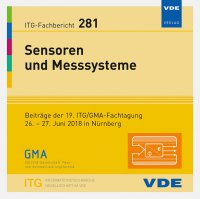The Influence of Temperature on the Frequency Dependent Directivity of Ultrasonic Transducers – An Indirect Acquisition Technique
Konferenz: Sensoren und Messsysteme - 19. ITG/GMA-Fachtagung
26.06.2018 - 27.06.2018 in Nürnberg, Deutschland
Tagungsband: Sensoren und Messsysteme
Seiten: 4Sprache: EnglischTyp: PDF
Persönliche VDE-Mitglieder erhalten auf diesen Artikel 10% Rabatt
Autoren:
Ponschab, Michael; Kiefer, Daniel A.; Rupitsch, Stefan J. (Chair of Sensor Technology, Friedrich Alexander University (FAU) Erlangen-Nuremberg, Germany)
Inhalt:
Components of ultrasonic measurement devices suffer from exposition to temperature fluctuations, which influence both the speed of sound in the surrounding medium and the material properties of the ultrasonic transducer itself. A consequence may be deviations of the frequency response and the frequency dependent directivity pattern. This might have an undesirable impact, for instance, on the accuracy of flow metering devices. A conventional method for the determination of radiation patterns of water-coupled ultrasonic transducers is the scanning of the sound field with a hydrophone. Using this technique for the purpose of measuring influences of temperature would be challenging and time consuming. The required water basin, which represents a large thermal capacity, must be kept on stepwise constant temperatures. Furthermore, the hydrophone might not be designed for such conditions. The approach presented in this contribution exploits an indirect acquisition of the directivity. Instead of simulating the unknown ultrasonic transducer setup the normal velocity of the transducer surface is measured in air with a Laser-Scanning-Doppler-Vibrometer. In a second step, the acquired normal velocity serves as excitation signal for a finite-element simulation of the radiated sound field. The influence of temperature on the transducer is studied by recording the corresponding membrane vibrations while placing the transducer in a climatic chamber. The temperature dependent speed of sound of water is taken into account during simulation. For sake of validation, a comparison to hydrophone measurements at room temperature reveals good agreement of the frequency response at zero angle. The resulting directional patterns also exhibit distinctive similarities.


